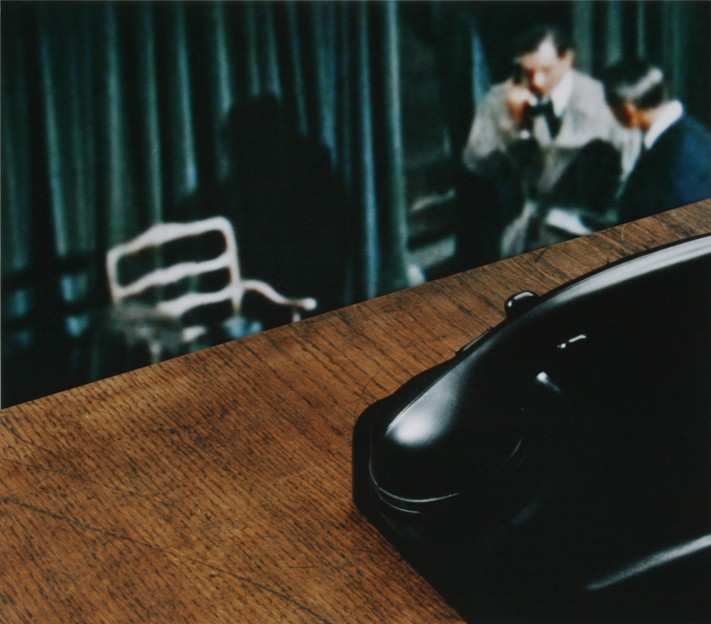
Der osmotische Blick
Roland Fischer-Briand
Es ist bezeichnend, dass in den Arbeiten von Martina Sauter der Blick erst im zweiten Moment auf ein Paradoxon stößt. So wie im Vorspann eines Films, wo der Betrachter langsam in eine fiktionale Welt hinübergleitet, taucht man hier auf, um festzustellen, dass man in zwei mediale Räume gleichzeitig Eingang fand.
Zwischen Screenshots, deren leuchtende Bildschirm-Dioden sie noch als Spur mit sich tragen, und einem ‚Realraum‘, dessen Schärfe sich nach und nach abzeichnet, wird schließlich ein klarer Schnitt erahnbar. Diese übereinander gelagerten Ebenen – Paneele – referenzieren nicht nur auf die filmische Technik der Montage, sondern verschränken ihre räumliche Diskrepanz formal wie inhaltlich. Sie extrapolieren cinephile Erinnerung (wie etwa an Hitchcock und Godard), um sie mit unserer persönlichen Welt kollidieren und gleichzeitig untrennbar verschmelzen zu lassen. Der Bruch bleibt jedoch haptisch spürbar.
Oft sind es aufgeladene Räume der Entscheidung: Korridore, Treppen, Türschwellen – mal mit, mal ohne Protagonisten –, deren dramaturgisches Moment in der Antizipation des Flüchtigen liegt. Sie wirken wie Vexierbilder, die Innen- und Außenraum umkehren, und trotz ihrer kompositorischen Stille den Betrachter nahezu konspirativ und ruhelos in seinen Bann ziehen.
It is characteristic of Martina Sauter’s work that the viewer discovers a paradox only on second glance. Just as in a film trailer during the course of which the viewer slowly transitions into a fictional world, we emerge to discover that we have gained entrance to two medial spaces at the same time.
Between screenshots – whose glowing display-diodes carry them along as a mere trace – and a “real space” the sharpness of which progressively emerges, a clear cut finally becomes perceivable. These stacked levels – panels – don’t just reference the cinematic technique of the montage, but interlace its spacial discrepancy both formally and in regard to content. They extrapolate cinephile memories (of Hitchcock and Godard for example), and allow them to collide with our personal world, melding them simultaneously and inextricably. The break, however, remains palpable.
They are often charged, decisive spaces: corridors, stairways, doorways – sometimes with, sometimes without protagonists – the dramaturgical moments of which lie in the anticipation of the ephemeral. They behave as picture puzzles that invert interior and exterior spaces, in spite of their compositional stillness they conspiratorially and restlessly cast a spell upon the viewer.